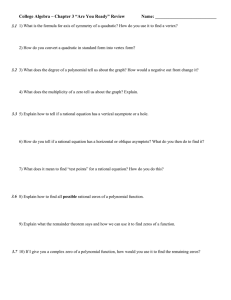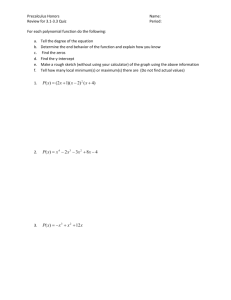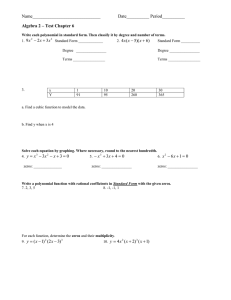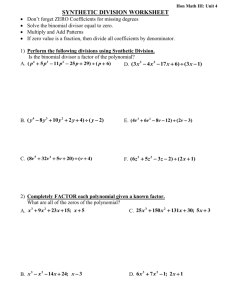2 5 4
advertisement
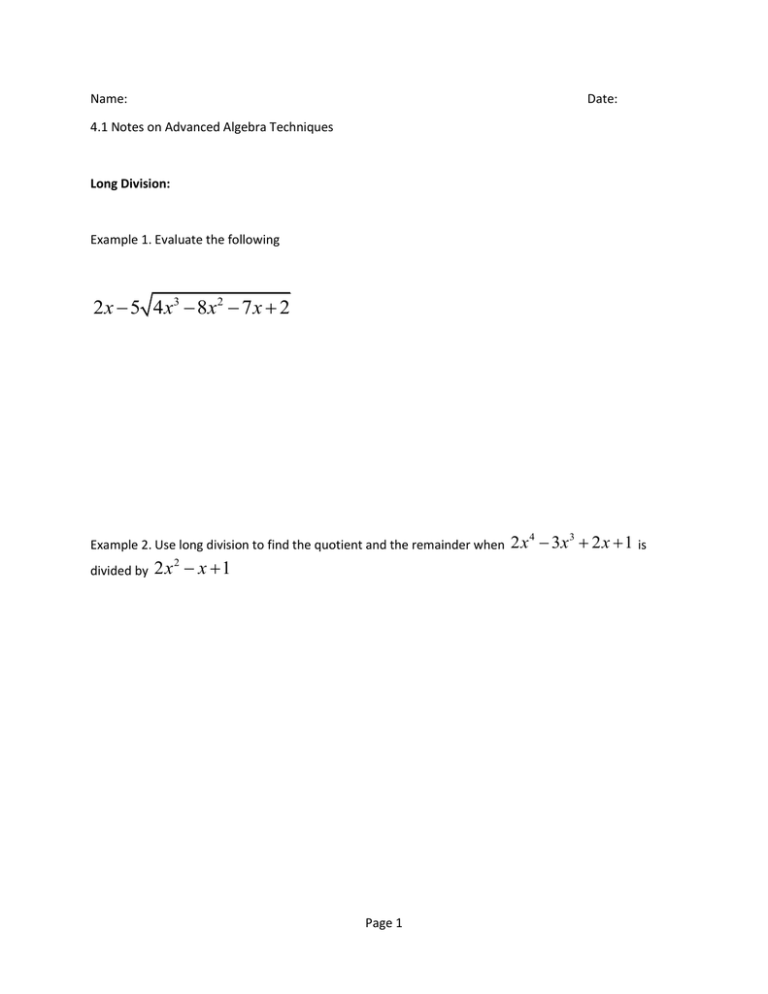
Name: Date: 4.1 Notes on Advanced Algebra Techniques Long Division: Example 1. Evaluate the following 2 x 5 4 x3 8 x 2 7 x 2 Example 2. Use long division to find the quotient and the remainder when divided by 2 x2 x 1 Page 1 2 x 4 3x3 2 x 1 is Synthetic Division: Example 3. Divide the following using synthetic division. Write a summary statement in fraction form. 3x3 2 x 2 6 x 10 x2 Remainder Theorem: If a polynomial f ( x ) is divided by x k , then the remainder is r f (k) 3 Example 4. Find the remainder when 2 x 4 x 1 is divided by 1. x 1 2. x 5 3. x3 Page 2 Rational Zeros Theorem: A. Real zeros of polynomial functions can be either rational or irrational B. Suppose f is a polynomial function of degree n > 0 of the form an x n an1 x n1 ... a0 with every coefficient an integer and a0 0 . If p is a rational zero of f, where p and q have no q common integer factors other than 1, then a. p is an integer factor of the constant coefficient a0 b. q is an integer factor of the leading coefficient an *Not everything in this list will be a root, and non-integer roots won’t be in the list, but if we are lucky, we will be able to identify a root with this method. Test to see if these equal zero, then use synthetic to find the rest.) Example 5. List all possible zeros of the following functions. a. g ( x) 3 x 3 2 x 4 b. h( x) 6 x 4 2 x3 x 5 Page 3 Example 6. List all rational zeros of the following functions. (Find one using the rational roots theorem, then use synthetic!) a. f ( x) 2 x3 x 2 13x 6 b. f ( x) x 3 4 x 2 1 Example 7. Write the equation in standard form for the quartic polynomial with zeros 1, -1, 2, -1/2 through the point (-2,9). Page 4

